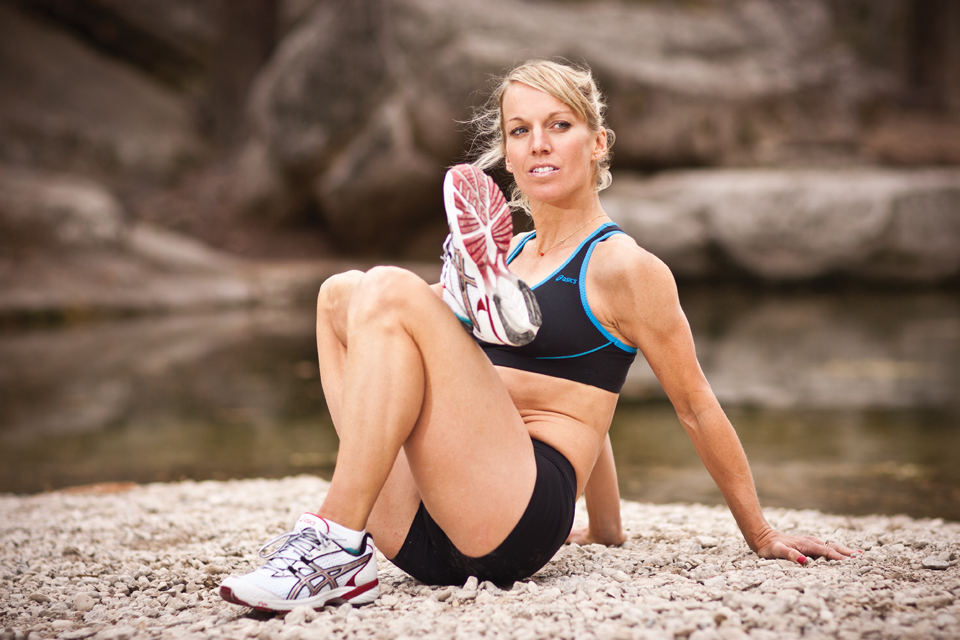Beginners Guide To Stretching and Mobility

We hear it all the time in many different forms — stretch. Stretches before you run, stretches after running, stretch on your off-days.
While we know we’re supposed to be “stretching,” what does that really mean, and how can beginners get started with stretching and mobility in a non-painful, useful way?
Stretching, Flexibility and Mobility: What’s the difference?
These terms are often used in tandem, but they are actually separate ideas.
Stretching is the process of increasing your body’s range of motion. Stretching is a gradual introduction of larger ranges of motion to your body, which is achieved by spending time at or near the end points of that range.
Flexibility is essentially your comfort level at or near those endpoints. When we stretch, we are teaching our nerves to quiet down, letting them know that what feels like an extreme position is actually safe.
The more flexible we get, the less our nerves flare up in those larger ranges of motion, meaning we feel less pain in those positions and are thus more “flexible.”
Mobility looks at joints. Mobility refers to how freely you can move at a particular joint or how much range of motion you have at that joint.
How does that affect fitness?
First and foremost, stretching increases preparedness. If our bodies are used to extreme positions, we are less likely to tear or break something if we wind up in an extreme position during a workout.
In addition to that, stretching allows you to identify where you’re tight. Tightness often causes exercise form to suffer, in order to compensate for that tight area. Knowing where you are tight allows you to key into that area during your workout, and correct your form before you get injured.
Head-to-Toe Stretching
This stretching routine covers both static and dynamic or moving stretches and works from top-to-bottom.
Neck and Shoulders
We’ll start with the neck and shoulders, a problem area for most working, typing adults. To begin, grab a lacrosse ball or something similar. Lay on your back with the soles of your feet on the ground and place the ball on one side below your neck, on muscle not bone.
From here, start to move your arm on that side straight up and down, for about ten repetitions. Next, move that arm in a snow angel pattern for about ten repetitions, and then repeat on the other side. Feel free to play around with the placement of the ball here.
Next, go ahead and stand or kneel and take a few arm circles in both directions. Then, swing your arms across your chest and open behind you. About ten of each movement should suffice.
Hips
The outside of the hips is tight on most people. To begin here, lay on your side and prop yourself up on your elbow. Take your lacrosse ball (or other mobility tool) and place it under your bottom hip. Move it around until you find the tight spot.
Next, bend and straighten your bottom leg here. You can also roll front to back or side to side to open up the tissue around the tight spot as well.
After that, move into a dynamic stretch and find a runner’s lunge. Once you are in that position, start creating big circles around your front foot, reversing direction after a few repetitions.
Be sure to repeat all of this on the other side.
Hamstrings
For the hamstrings, find a raised, flat surface to sit on. Next, place your lacrosse ball or mobility tool underneath the middle of one hamstring.
From there, take that leg and start to extend and bend it. Move it side to side, just find movement of any kind, letting the mobility tool open up the hamstring tissue beneath. Again, feel free to play around with tool placement.
For a dynamic hamstring stretch, stand up and take a wide stance, wider than hips’ width. Next, bend over and grab your calves or ankles, whatever you can. Start to bend and straighten your knees.
No problem if you cannot straighten your knees all the way, just go to where you can, and then bend from there. Aim for 15 repetitions here.
Lower Leg
To begin for the ankles and calves, sit with your legs in front of you and place the ball under one calf. Start to make some ankle circles with that foot, flex and pointing. As always, play around with where the tool is located — either closer to your ankle or to your upper calf.
Lastly, stretch your calves by hanging off of a curb or a step, letting your heel drop below the step while your toes are still on it. Hold onto something at the top and enjoy this deep calf stretch.
Take away from this routine whichever part applies to where you are tight, or incorporate the whole routine. You won’t regret it. Happy stretching!
*Holly Martin is a running coach and personal trainer. With a 20+ year background in dance, Holly brings a strong focus on technique and mobility to all of her coaching. Currently, she is an online coach with The Run Experience, an online training community that specializes in providing beginners running plan, marathon training, workouts and more. She also trains clients at Midline Training and Nfinite Strength.






